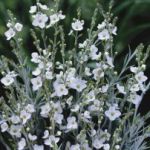| Common Name: |
Patchouli |
| Botanical Name: |
Pogostemon cablin syn. P. patchouli |
| Genus: |
Patchouli |
| Family: |
Lamiaceae |
| Native Location: |
Brazil, China, India, Indonesia, Phillipines, Malaysia |
| Cultivation: |
Rich, moist soil with high humidity. Pinch out or cut back plants in spring to encourage bushy growth. |
| Propagation: |
By seed sown when ripe (plants rarely set seed); by greenwood cutting (most usual method) with a heel in late spring, or by division in spring or autumn. |
| Harvest: |
Leaves are cut two or three times a year and dried, mainly for oil distillation. |
| Height: |
1m (3ft) |
| Width: |
1m (3ft) |
| Hardiness: |
Min. 10-15°C (50-59°F) |
| Extraction: |
Steam distillation |
| Parts Used: |
Leaves, oil |
| Color and Odor: |
The essential oil is deep amber in color with a persistent, musty, earthy and exotic aroma that is also very penetrating. This essential oil improves with age. |
| Background: |
Patchouli has long been prized for its strong scent. Used to scent shawls in India, the practice was copied by Paisley weavers after patchouli was introduced to Britain in 1820. It is important in perfumery as an excellent fixative. Patchouli was very popular as a personal scent in England during the "psychedelic" sixties. |
| Properties: |
Sedative, tonic, cytophylactic, anti-inflammatory, nervine.
An astringent antiseptic, warming herb with a long-lasting, pervasive aroma. It acts as a diuretic, lowers fever, improves digestion, controls vomiting, has both tonic and sedative effects on the nervous system, and is reputedly aphrodisiac. |
| Uses: |
- Nervous System—Of value in nervous debility, strengthening the nerves.
- Skin—Treats cracked skin and weeping sores, having mild anti-inflammatory properties. Also suitable for skin allergies. Patchouli is rejuvenating and is good for mature skin, promoting the growth of new skin cells and helping skin to maintain suppleness.
- Emotions—Patchouli has a sedative effect useful in anxiety states. The profoundly earthy smell of patchouli can also stimulate the nervous system. Its penetrating quality is very forceful, reaching deep into the emotions, with voluptuous suggestions shaking one out of a sense of indifference and neglect. Dispels feelings of anxiety about sex.
|
| Medicinal Uses: |
Internally for colds, headaches, fever, nausea, vomiting, abdominal pain and diarrhea (leaves). Externally for halitosis, snake bite, fungal skin infections, weeping eczema, acne, chapped skin, varicose veins, hemorrhoids, and impetigo (leaves, oil). Oil is used in aromatherapy for nervous exhaustion, depression, stress-related complaints, low libido, and frigidity. |
| Economic Uses: |
Oil is of major importance in perfumery; also in toiletries, cosmetics, breath fresheners, incense, insecticides and disinfectants, and in commercial food flavoring. Leaves are added to potpourris. |
| Blends: |
| Bibliography: |
Aromatherapy Blends and recipes by Franzesca Watson Copyright © 1995 Thorsons, Harper Parker Publishing Inc. Pp 148-149
The Encylcopedia of Herbs by Deni Bown Copyright © 1995,2001 Dorling Kindersley Limited pg. 325 |
|

